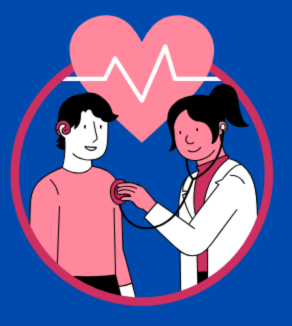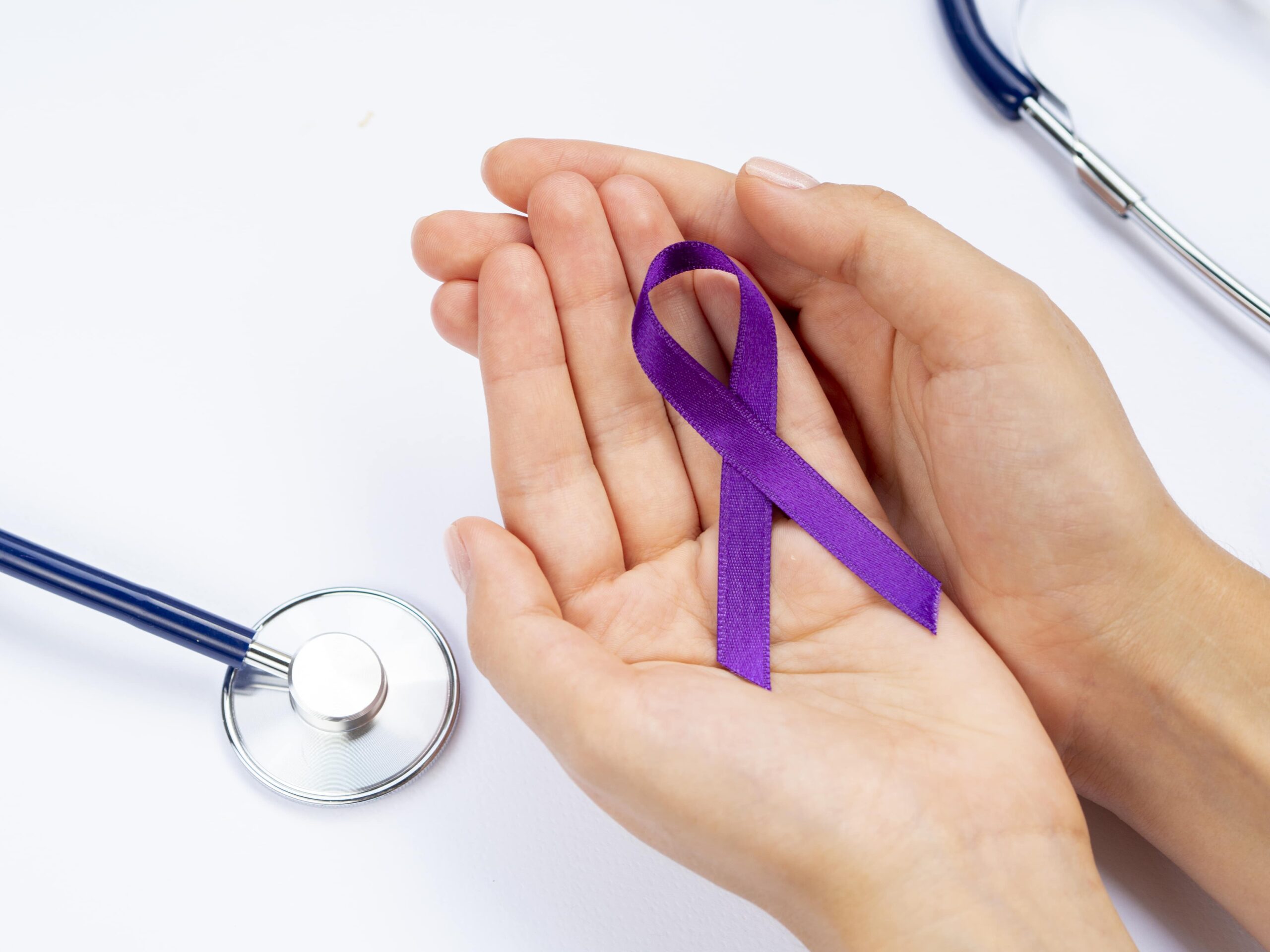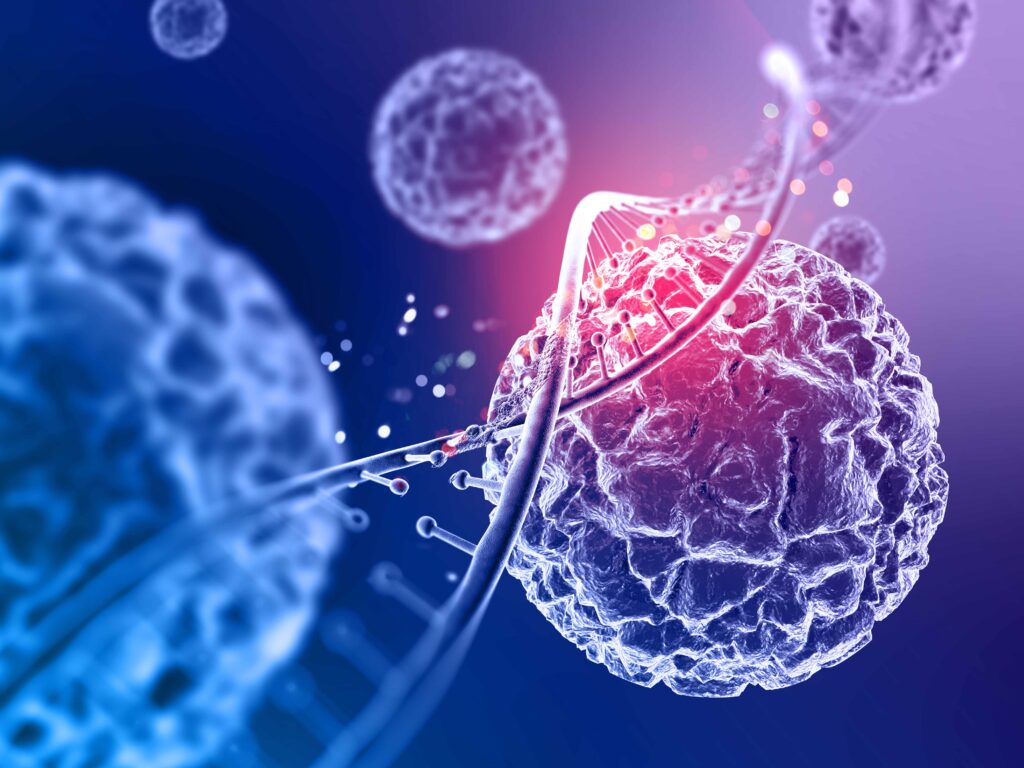What is Cancer ?
Cancer is a group of diseases defined by the uncontrolled growth and spread of cells that are abnormal. If the spread is not controlled, it can lead to death. Cancer can grow in almost every tissue in the body. Cancer normally progresses through the following stages:
Initiation: This is the first stage, where a change or mutation occurs in the DNA of a normal cell. These changes can be caused by external factors such as chemicals, radiation, and viruses, or by internal factors like inherited mutations, hormones, and immune conditions.
Promotion: During this stage, the mutated cell begins to multiply. The body’s normal regulatory processes fail to correct or remove these abnormal cells, leading to a buildup of mutated cells.
Progression: In this final stage, the cancer cells grow uncontrollably, invade nearby tissues, and can spread to other parts of the body through the blood and lymphatic systems in a process known as metastasis.
Types of Cancer :
Cancer is classified based on the type of cell it originates from. Major types include:
- Carcinomas
- Sarcomas
- Leukemias
- Lymphomas
- Central Nervous System (CNS) Cancers
Cancer refers to a wide range of disorders, each of which is classified according to the type of cell or tissue from which it originated. Here’s a detailed look at the main forms of cancer:
Carcinomas :
Carcinomas are the most common type of cancer, originating from epithelial cells, which cover the inside and outside surfaces of the body. Sub types include:
- Adenocarcinoma: Begins in glandular (secretory) cells. Common sites include the breast, colon, and prostate.
- Squamous Cell Carcinoma: Originates in the squamous epithelium, commonly found in the skin, lungs, and cervix.
- Basal Cell Carcinoma: The most common skin cancer, arising from the basal cells in the epidermis.
- Transitional Cell Carcinoma: Occurs in the urinary system, particularly the bladder, ureters, and parts of the kidneys.
Sarcomas
Sarcomas arise from connective tissues such as bone, cartilage, fat, muscle, or blood vessels. They are relatively rare and include:
- Osteosarcoma: A type of bone cancer that typically affects the long bones, such as the arms and legs.
- Chondrosarcoma: Cancer of the cartilage.
- Liposarcoma: Arises in fat cells.
- Leiomyosarcoma: Originates in smooth muscle cells, often found in the uterus, gastrointestinal tract, and blood vessels.
- Rhabdomyosarcoma: Affects skeletal muscle cells and is more common in children.
Leukemias
Leukemias are cancers of the blood and bone marrow, characterised by the overproduction of abnormal white blood cells. They are classified into four main types:
- Acute Lymphocytic Leukemia (ALL): Rapidly progressing, affecting lymphoid cells. Most common in children.
- Acute Myeloid Leukemia (AML): Rapidly progressing, affecting myeloid cells. More common in adults.
- Chronic Lymphocytic Leukemia (CLL): Slowly progressing, affecting lymphoid cells. Typically occurs in older adults.
- Chronic Myeloid Leukemia (CML): Slowly progressing, affecting myeloid cells. Often diagnosed in older adults
Lymphomas
Lymphomas originate in the lymphatic system, which is part of the body’s immune system. There are two main types:
- Hodgkin Lymphoma: Characterised by the presence of Reed-Sternberg cells. It often starts in the lymph nodes and spreads in a predictable pattern.
- Non-Hodgkin Lymphoma: A diverse group of cancers affecting lymphoid tissues, which do not contain Reed-Sternberg cells. It can arise in lymph nodes, spleen, or other organs.
Central Nervous System (CNS) Cancers
CNS cancers begin in the tissues of the brain and spinal cord. Common types include:
- Gliomas: Originating from glial cells, which support and protect neurons. Subtypes include astrocytomas, oligodendrogliomas, and ependymomas
- Meningiomas: Arise from the meninges, the protective membranes covering the brain and spinal cord.
- Medulloblastomas: The most common type of pediatric brain cancer, originating in the cerebellum.
- Schwannomas: Develop from Schwann cells, which produce the myelin sheath covering nerves.
Other Types of Cancer
Beyond the major categories, there are several other types of cancer that affect specific tissues or organs:
Melanoma: A type of skin cancer originating in melanocytes, the cells that produce pigment. Melanoma is less common but more aggressive than other skin cancers.
Multiple Myeloma: A cancer of plasma cells, a type of white blood cell that produces antibodies. It often affects the bone marrow and can lead to bone lesions.
Neuroendocrine Tumors: Arise from neuroendocrine cells, which have both nerve and endocrine (hormonal) functions. Examples include carcinoid tumors and pancreatic neuroendocrine tumors.
Germ Cell Tumors: Originate from reproductive cells, commonly occurring in the testes (testicular cancer) or ovaries (ovarian cancer), but can also appear in other parts of the body.
Mesothelioma: A rare cancer that develops in the mesothelium, the thin layer of tissue covering most internal organs. It is often linked to asbestos exposure and commonly affects the lining of the lungs (pleura) or abdomen (peritoneum).
How cancer caused ?
Cancer is caused by a complex combination of genetic, environmental, and lifestyle factors. Cancer is caused by the accumulation of genetic mutations, which result in uncontrolled cell proliferation. Here’s a full explanation of how cancer is caused:
- Genetic Factors
- Environmental Factors
- Lifestyle Factors
- Infections : 1.Viruses: 2.Bacteria
- Hormones
- Immune System Dysfunction
- Age
Genetic Factors
Mutations: Cancer begins with genetic mutations in a cell’s DNA. These mutations can be inherited or acquired.
Inherited Mutations: About 5-10% of cancers are due to inherited genetic mutations. Examples include BRCA1 and BRCA2 mutations, which significantly increase the risk of breast and ovarian cancers.
Acquired Mutations: The majority of cancers are caused by mutations that occur during a person’s lifetime. These can be due to environmental factors or errors in DNA replication.
Oncogenes and Tumor Suppressor Genes: Mutations can activate oncogenes (genes that promote cell growth) or inactivate tumor suppressor genes (genes that regulate cell division and repair DNA damage).
Oncogenes: Normally, these genes help cells grow. When mutated, they can cause cells to grow uncontrollably.
Tumor Suppressor Genes: These genes usually control cell division, repair DNA mistakes, or tell cells when to die (apoptosis). Mutations can disable these functions, allowing uncontrolled cell growth.
DNA Repair Genes: Mutations in genes that repair DNA damage can lead to an accumulation of genetic errors, increasing cancer risk.
Environmental Factors :
Carcinogens Substances that cause cancer by damaging DNA. Examples include:
Tobacco Smoke: Contains numerous carcinogens, leading to lung cancer and other cancers.
Asbestos: Fibers can cause mesothelioma, a cancer of the lung lining.
Radiation: UV radiation from the sun can cause skin cancer; ionizing radiation from X-rays and radioactive materials can cause various cancers.
Chemicals: Exposure to certain chemicals in the workplace or environment can increase cancer risk. For example, benzene is linked to leukemia, and formaldehyde is associated with nasopharyngeal cancer.
Lifestyle Factors
Diet and Physical Activity:
Diet: High-fat, low-fiber diets are linked to cancers of the colon, breast, and prostate. Consumption of red and processed meats has also been associated with an increased risk of colorectal cancer.
Obesity: Increases the risk of several cancers, including breast, colon, and endometrial cancers.
Physical Activity: Regular exercise can reduce the risk of various cancers by helping maintain a healthy weight and regulating hormone levels.
Alcohol Consumption: Increases the risk of cancers of the mouth, throat, esophagus, liver, breast, and colon.
Tobacco Use: The leading preventable cause of cancer. Smoking is linked to cancers of the lung, mouth, throat, esophagus, pancreas, bladder, and more.
Infections
Certain infections are linked to cancer development:
Viruses:
Human Papillomavirus (HPV): Causes cervical, anal, and oropharyngeal cancers.
Hepatitis B and C: Linked to liver cancer.
Epstein-Barr Virus (EBV): Associated with nasopharyngeal cancer and some types of lymphoma.
Human Immunodeficiency Virus (HIV): Increases the risk of several cancers, including Kaposi sarcoma and non-Hodgkin lymphoma.
Bacteria:
Helicobacter pylori: Chronic infection can lead to stomach cancer and lymphoma of the stomach lining.
Hormones
Hormonal imbalances can contribute to the development of certain cancers:
Estrogen and Progesterone: High levels can increase the risk of breast and endometrial cancers.
Androgens: High levels of male hormones can promote prostate cancer.
Immune System Dysfunction
A weakened immune system can fail to detect and destroy cancer cells, allowing them to multiply:
Immunodeficiency: Conditions like HIV/AIDS or immunosuppressive drugs can increase cancer risk.
Chronic Inflammation: Long-term inflammation can lead to DNA damage and promote cancer. For example, chronic inflammatory bowel disease increases the risk of colon cancer.
Age
The risk of cancer increases with age, as the cumulative exposure to risk factors and the likelihood of genetic mutations rise over time.
How does cancer spread ?
The body undergoes a process known as metastasis.This involves several steps:
- Local Invasion: Cancer cells infect neighboring healthy tissue. This occurs when cancer cells break away from the initial tumor and enter the surrounding tissue.
- Intravasation is when cancer cells penetrate surrounding blood or lymphatic channels. Enzymes known as matrix metalloproteinases (MMPs) facilitate this process by breaking down the surrounding extracellular matrix, allowing cancer cells to get through.
- Cancer cells circulate through the circulation or lymphatic system to other areas of the body. During this voyage, some cancer cells die, while others survive and circulate until they reach a new location.
- Extravasation occurs when cancer cells depart blood or lymphatic vessels and go to a new place. They then infiltrate the surrounding tissue at their new location.
- Colonization is the process by which cancer cells form new tumors at a new location. Cancer cells must be able to proliferate in the new environment for metastasis to occur, which might be difficult owing to differences in circumstances from their original site.
- Angiogenesis is the process by which new tumors encourage to prevene creation of new blood vessels to deliver nutrients and oxygen to the tumor. Without this, the tumor cannot grow larger than a specific size.
How to prevent cancer ?
- Vaccination: Vaccines are available to protect against certain cancer-linked infections, such as the HPV vaccine and the hepatitis B vaccine.
- Screening and Treatment: Early detection and treatment of infections like H. pylori and HBV/HCV can reduce the risk of developing associated cancers.
- Safe Practices: Using protection during sexual activity, avoiding shared needles, and ensuring safe food and water can reduce the risk of infection with cancer-linked pathogens.
- Organ Transplant and Cancer
In rare cases, cancer can be transmitted through organ transplants if the donor had undetected cancer. This is extremely rare, and screening protocols for organ donors are in place to minimize this risk.
Cancer is communicable or noncommunicable :
Cancer is generally not considered a communicable disease, which means that it does not spread from person to person via direct contact, airborne transmission, or other common mechanisms of infectious disease transmission. Certain underlying infections, which might increase the risk of cancer, can be passed from person to person. Here are some specific points to consider:
communicable:
Viruses:
- Human Papillomavirus (HPV): Linked to cervical, anal, and oropharyngeal cancers. HPV is spread through sexual contact
- Hepatitis B and C Viruses (HBV and HCV): Linked to liver cancer. HBV and HCV are transmitted through blood and bodily fluids, including during sexual contact and through shared needles.
- Epstein-Barr Virus (EBV): Associated with certain lymphomas and nasopharyngeal cancer. EBV is spread through saliva.
Bacteria:
- Helicobacter pylori: Linked to stomach cancer and certain types of lymphoma. H. pylori can be spread through contaminated food and water and close contact with infected individuals.
Parasites:
- Schistosoma haematobium: Associated with bladder cancer. The parasite is spread through contact with contaminated water.
Non-Communicable Nature of Cancer
Cancer is caused by genetic abnormalities within cells, resulting in uncontrolled growth and division. These mutations can be caused by a variety of causes, including genetics, environmental exposures, and lifestyle choices.
- Lack of Direct Transmission: Cancer cells from one person cannot live in another person’s body because the immune system recognizes and destroys foreign cells. Cancer does not spread through direct touch, respiratory droplets, or bodily fluids.
- Infectious agents linked to cancer.
While cancer is not communicable, some diseases caused by viruses, bacteria, and parasites can raise the risk of acquiring it. These illnesses can be transferred among people, increasing the underlying risk factors for cancer.


